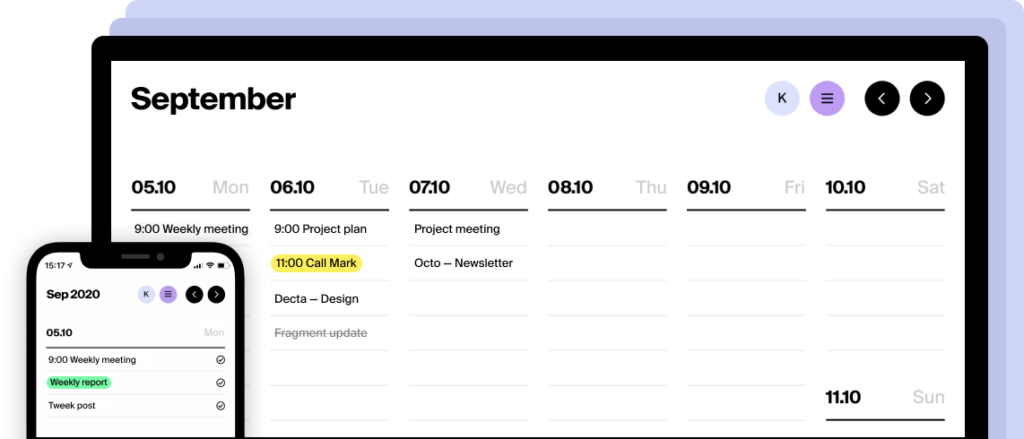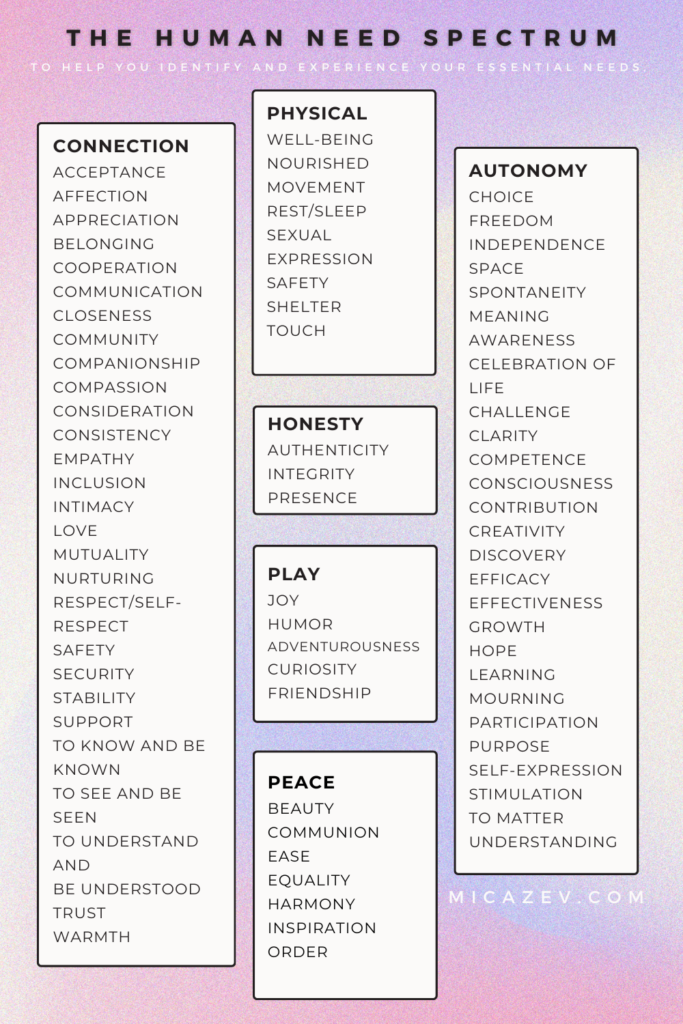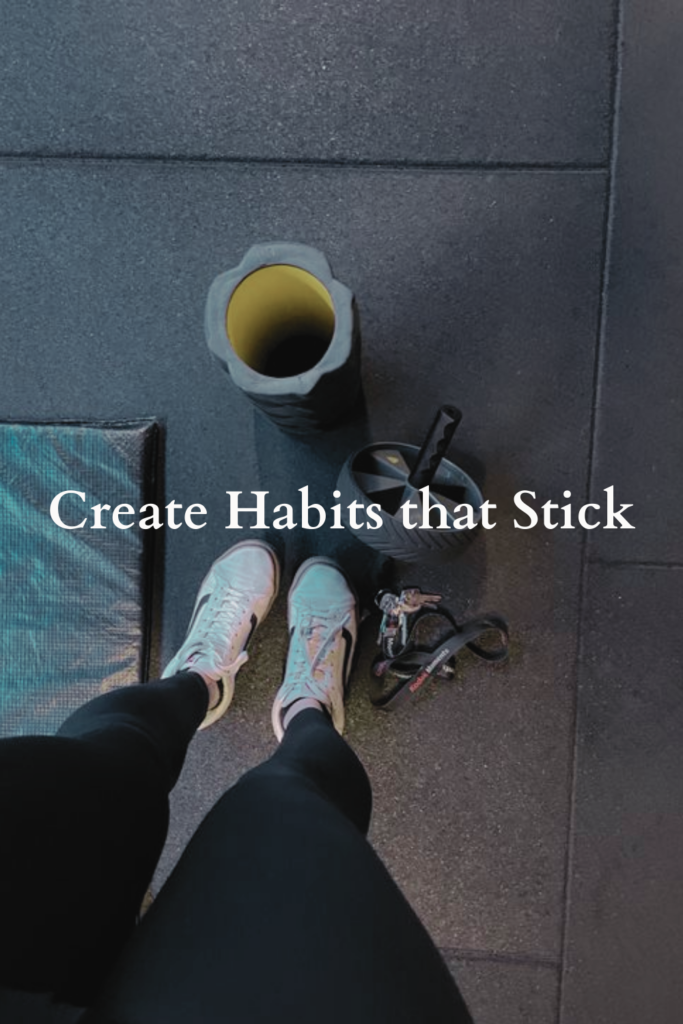Stressful days and weeks are something we all encounter, yet we often find ourselves without a clear vision of what truly constitutes a fulfilling day or week. Daily planning can be a daunting task. You’re faced with the challenge of fitting work, family, self-care, and countless other obligations into a mere 24 hours span. It’s like trying to solve a puzzle with pieces that never quite fit. The pressure of making every moment count can be overwhelming and one unfinished task can feel like a failure.
Changes in circumstances, work, and personal goals necessitate a regular reassessment of your ideal day. That’s why idealizing a whole nice week might be a better alternative. By managing your activities across a week, you can achieve a more realistic and balanced routine.
For me, this shift in my approach to planning has truly been a game changer. If, for any reason, I miss going to the gym on Monday, Tuesday, and Wednesday, it’s no cause for despair. I remind myself that there are still four more days in the week for me to reach my goal of working out three times a week.
In essence, adopting a weekly perspective is a form of self-respect and self-care. The rigid structure of working hours, based on clock time, was originally devised for industrial purposes to regulate workers, a construct far removed from the natural rhythms that have shaped our bodies over hundreds of thousands of years as hunter-gatherers. Embracing this critial thinking empowers you, whenever your routine shifts, to adjust the weight of societal expectations in your life, reconsider what your ideal week and day look like, and fine-tune your own priorities.
Let’s move from macro to micro:
The Ideal Week
When embarking on the “Ideal Week” planning process, begin by determining how you want to feel at the week’s end:
- Relaxed
- Smart
- Abundant
- Productive
- Creative
- Successful
Select the emotions and qualities that resonate most with your outlook on life and align with your current life phase.
With that in mind, start by considering the habits you aim to cultivate and the obligations awaiting your attention within your backlog of tasks.
This varies greatly from person to person, spanning a diverse spectrum, including parents, the elderly, nurses, and attorneys.
Instead of attempting to conform to the mold of productivity gurus, celebrate your individuality and embrace your uniqueness.
Each individual brings their unique set of familial responsibilities, specific tax regulations, cultural priorities, and varying income levels into the equation. Take the time to identify the variables that create your ideal, fulfilling week. The “ideal week” is a highly personal concept, far removed from a one-size-fits-all template.
Weekly planning vs. Weekly Ideation
While it can be applied to almost any aspect of life organization, remember weekly ideation is not about wishful thinking but rather connecting with your emotions, analyzing your reality and prioritizing, so you can find ways to make your week more peaceful – but it’s not entirely a weekly plan yet, with all minuntia.
A weekly planning is something you have to do everyweek to follow life changes, the weekly ideation is something you do every quarter, its an overall framework of everything you wanted to do independently of the variable tasks. What if there is a chill week where you have plenty of time? Go to your ideal week! What if you have to prioritize some tasks? Go to your ideal week!
Apps for weekly planning
You can always put your google/apple calendar into weekly view and go from there.
One tool that I’ve valued for years is Notion, renowned for its ability to adapt to these diverse variables. It allows you to commence with a template but offers the flexibility to evolve beyond the confines of a rigid PDF. Notion’s structured framework assists in identifying patterns and automating repetitive tasks, providing valuable mental space. Here are some ideas on how to structure it:
- You can employ a template without a complex database, instead utilizing practical automation via buttons;
- Start from a simple Kanban mode;
- In addition to the kanban, you can opt for a robust database and use the weekly calendar view.
There are more specialized options available, such as TeuxDeux, the YouTuber Matt D’Avella mentioned using it for years now.

And a similar, but free, version of it is the (so cute) tweek.so:

Another option is to configure a Trello for weekdays. There are numerous other apps available to explore and discover what works best for you – after all, you know your needs better than I do. (:
One more thing, I love that this concept of week span can even be safely applied to diet, as you can see on this section of video of the fitness specialist Thomas DeLauer:
Crafting My Ideal Week – Late 2023
Emotionally, I’m currently on a recovery journey after a challenging year. My main goal is to feel rested by the end of the week while also maintaining a sense of productivity. After months of unpredictability, having a sense of “control” over my life is crucial (but not the unhealthy kind of control – I’m sure you understand).
As for my default activities, many aspects of my life are in autopilot mode right now, including investments, my home cleaning and beauty routines, and my gym regimen, to name a few. I’ve already integrated these into my weekly plan and feel confident about managing them.
In terms of changing environments, my current situation is different from the past. I’m not formally employed by a company, nor am I freelancing as frequently as before. My family’s needs, covering financial, organizational, and health-related aspects, have undergone a significant shift. Balancing these demands with my minimum requirements for financial stability, maintaining my routines, and advancing my career presents a unique challenge.
I’ve adopted a slower routine, with no pressure to achieve grandiose goals.
In the past, I’ve experienced various life phases, each accompanied by distinct responsibilities. These ranged from
- having a chill college student life
- to caring for my grandmother as a young adult
- to pursuing corporate success on my late 20s
- or even globe-trotting while working as a web developer.
Currently, in addition to the family responsibilities and typical everyday activities I’ve already mentioned, my more demanding personal priorities encompass:
- Hitting the gym at least 4x a week – up from 3x I could manage for most of the year;
- Publishing 4 blog post a week, which involves creating Pinterest images and tackling several challenging aspects, adds an exciting and fulfilling dimension to this introspective phase;
- Decluttering and selling items to achieve my new minimalist goals – this entails lots of back-and-forth messaging, photo-taking, and measurements;
- Progressing in my software architecture post-graduate studies.
The Ideal Day
Well, as you might be familiar, the ideal day planning or ideation (as you prefer to call it) usually consists in stacking the habits you want to fullfill, with a block of working and another block for studying and hopefully basic hygiene and hobbies.
What I want to add for discussion is not blocking huge activities simply, as “8 hour day working”, but realisticaly considering our attention span, biological needs and just mind cleaning and social healthy flexibility. Calendar block is cool, but its not a imperial order, remeber it!
So, usually it makes sense to block the day in 2 ou3-hours blocks:
- 8am-10am
- 10am-12am
- 12pm-2pm
- 2pm-4pm
- 4pm-6pm
- 6pm-8pm
- 8pm-10pm
- 10pm-12am
- 12am – 8am
Within it you will also find the minimum viable daily, keep in mind the20/80 Pareto Principle, also known as the “80/20 rule,” that suggests that approximately 20% of your efforts or inputs lead to about 80% of your results or outputs.
Within it you will also find the minimum viable daily, keep in mind the20/80 Pareto Principle, also known as the “80/20 rule,” that suggests that approximately 20% of your efforts or inputs lead to about 80% of your results or outputs.
Typically, factors like regular exercise, dedicating at least one deep focus block, maintaining a healthy diet, and nurturing positive relationships encompass a solid 20% of what constitutes a fulfilling day, with long-term life in mind.
A habit tracker can be quite handy. But, you know, the real challenge with habit tracking is, who’s keeping track of the tracker? Haha I personally use Habitify, and I’ve found that it works best for me on my desktop. After struggling with it on my phone for years, it’s pretty cool to see how much better I track my habits on my computer.
Crafting My Ideal Day – Late 2023
I prefer the weekly view, but for the purpose of providing an example here, my ideal day looks something like this:
- 7 am – 8 am: Slow morning routine including self-care, reading, writing, tidying up, and delaying caffeine intake.
- 8:30 am – 10 am: Enjoy coffee, hit the gym, have breakfast, and take a shower.
- 10 am – 12 pm: Deep work.
- 12 pm – 2 pm: Light administrative work or cooking and lunch, often with family.
- 2 pm – 4 pm: Deep work.
- 4 pm – 6 pm: Engage in creative activities for work, manage tasks, or attend personal/family appointments.
- 6 pm – 7 pm: Dinner.
- 7 pm – 9 pm: Deep work.
- 9 pm – 10 pm: Screen time off.
- 10 pm – 12 am : Night routine and bedtime.
The goal is to work on content creation from 2 to 6 hours a day and allocate at least 2 hours to post-graduate studies. I typically maintain this routine on weekends as well, and I plan to continue doing so until the end of 2023. Occasionally, I might spend time at the park or attend a music show with a friend, but I generally stick to most of this block time schedule.
One more thing, it’s really interesting to try out different approaches and see how your ‘ideal day’ works in real life. For instance, this year, I tried incorporating more outdoor activities as a weekly park visit for reading and experimented with replacing my gym routine with indoor climbing twice a week.
Through experience, I discovered that it didn’t quite suit me, at least not at this phase of my life. YouTuber Lefie also attempted a similar experiment. You can check it out here, her planning phase:
and the actual outputs:
pin this post









